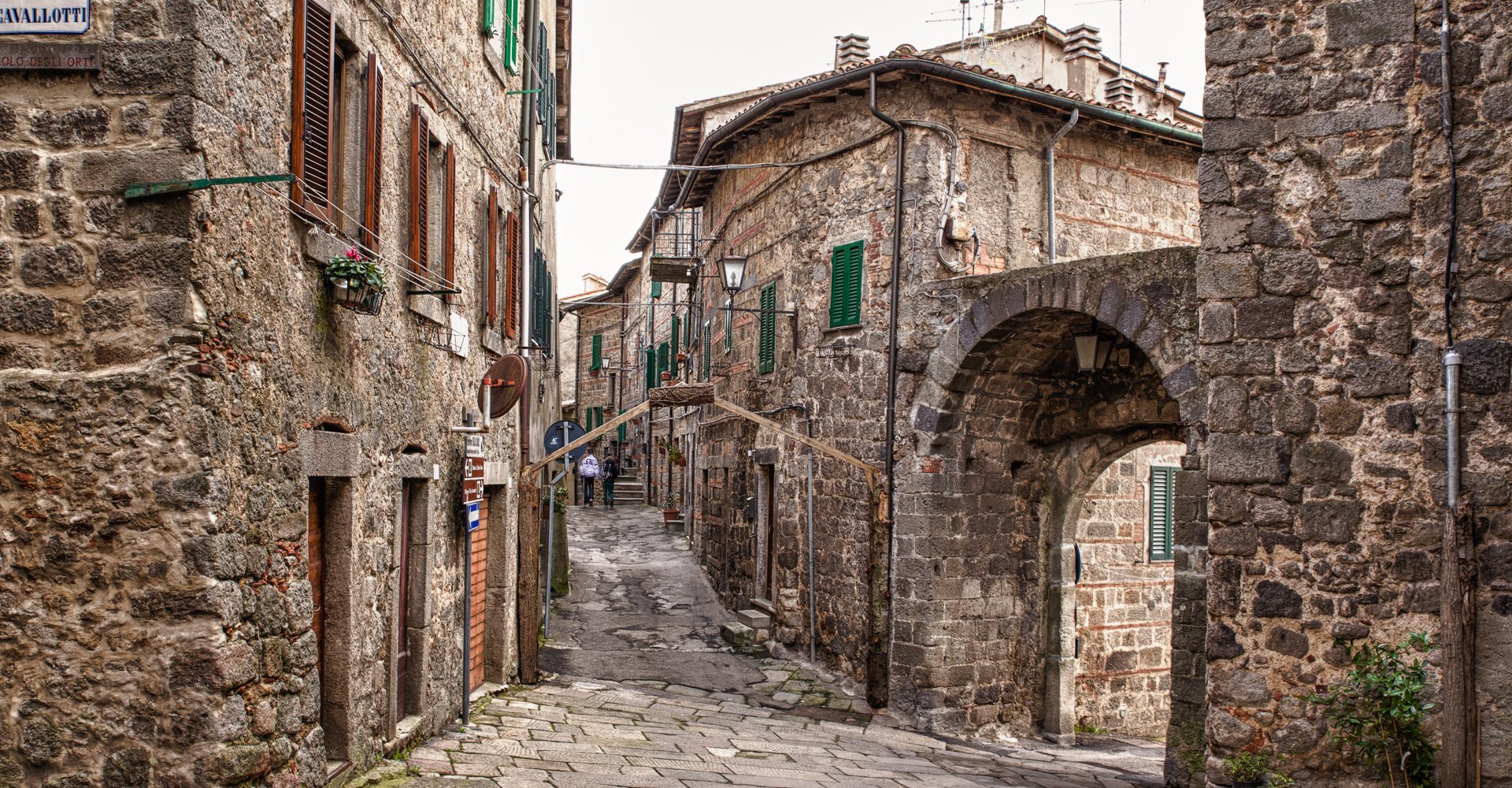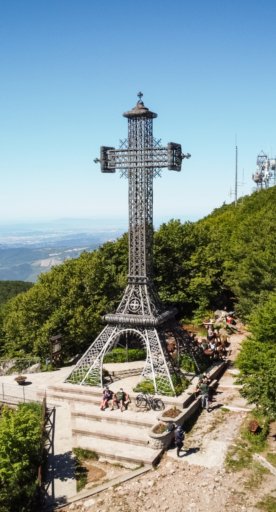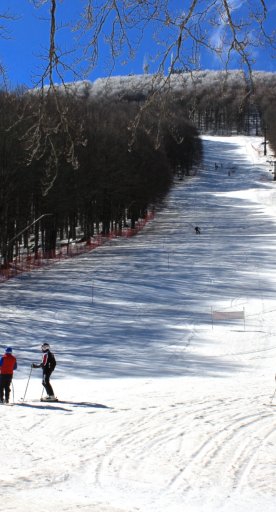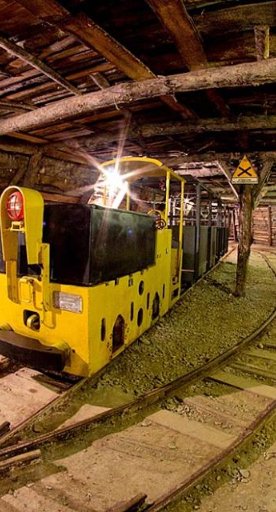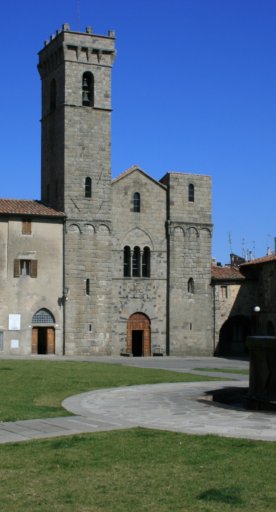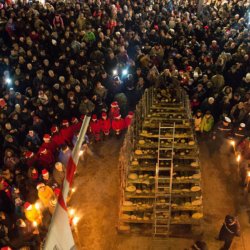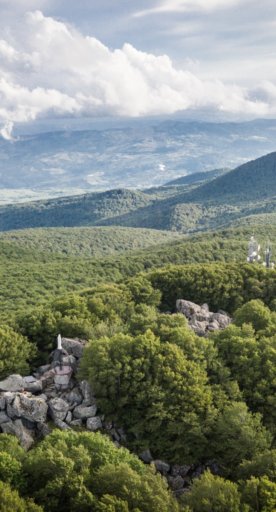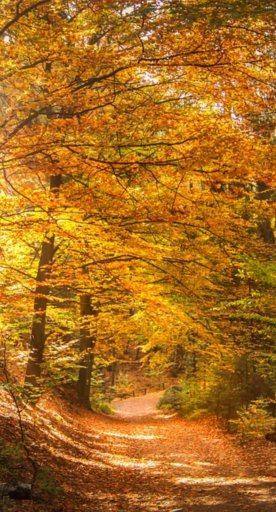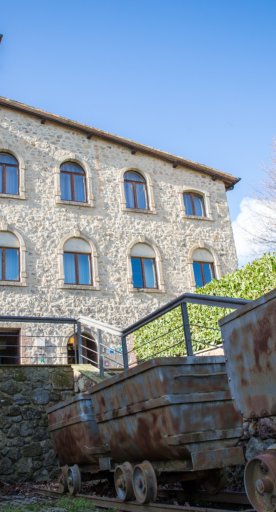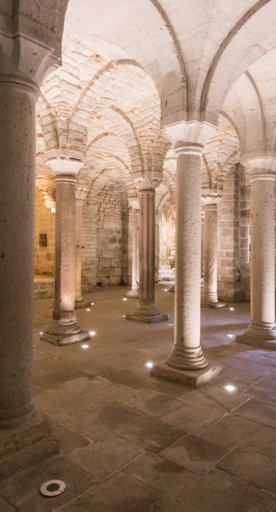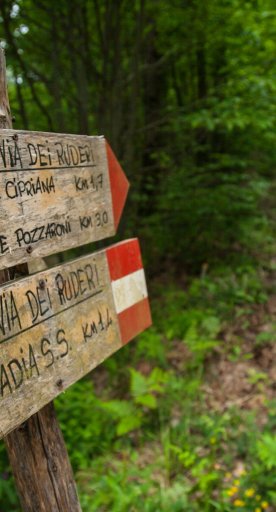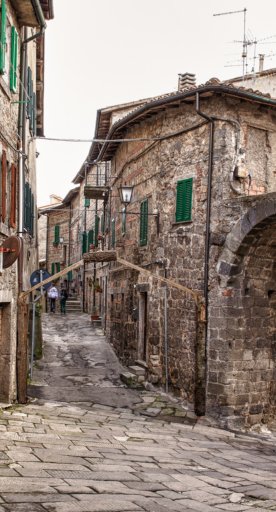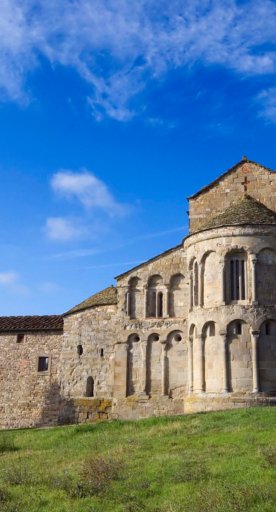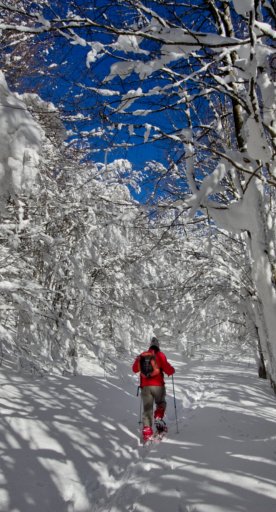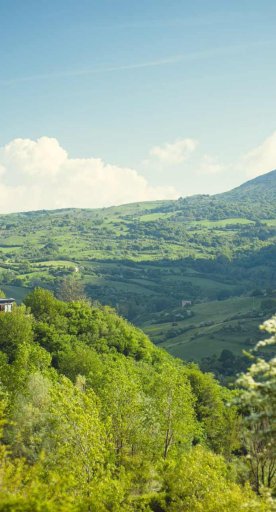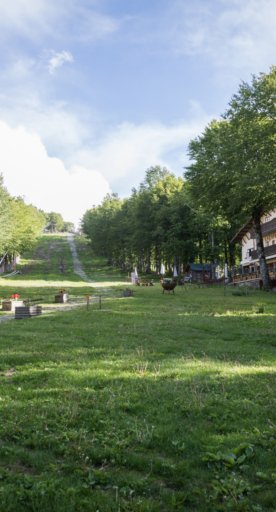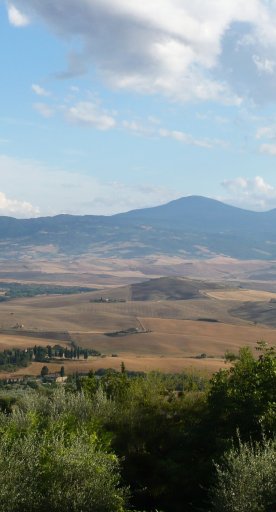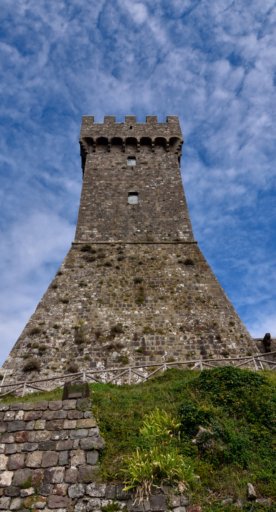Abbadia San Salvatore
From the age-old abbey to the mining museum, discover one of the loveliest towns in the Monte Amiata
The lovely town of Abbadia San Salvatore is closest to the summit of Monte Amiata as the crow flies, as well as one of the best-known tourist destinations in the area. The historic town developed around the abbey of the same name, whose importance has been retained throughout the centuries.
In the 15th century, Pope Pius II described it in his Commentarii: “Nature formed a valley the size of approximately eight stadiums, bordered by harsh cliffs. The ancients built a well-defended village with a ditch filled to the brim with flowing water.”
What to see in Abbadia San Salvatore
Arriving from the Via Cassia you catch the very first glimpse of Abbadia. It appears to be a modern town with wide, tree-lined avenues, but things change when you reach the town centre; it opens into a charming, atmospheric village, one of the loveliest places in Tuscany.
In the heart of the village is the San Salvatore Abbey, founded in 762 by the Lombard Duke Ratchis. The historic Bibbia Amiatina, an incredible example of an ancient manuscript, is held here. The Lombard crypt is also stunning, presumably dating back to the 7th century B.C with 34 columns.
You can reach the Castle via three streets that are more or less parallel to one another. The Santa Croce church (dating to 1221 but rebuilt in the 19th century) and Sant’Angelo church (1313, now a private home) are also found along these streets.
Palazzo del Podestà, Palazzo del Popolo and many other medieval buildings are equally as unmissable.
The mining complex near the town is of particular historical interest. Mined from 1897 until the 1970s, the mine bears witness to the pivotal changes in 20th-century Abbadia San Salvatore. The unused mine has been converted into a Mining Museum focusing on the geology, mining history, tunnelling, metallurgical work and the daily life of the miners. Outside the museum you can see one of the narrow-gauge convoys that were used in the tunnels.
Arriving from the Via Cassia you catch the very first glimpse of Abbadia. It appears to be a modern town with wide, tree-lined avenues, but things change when you reach the town centre; it opens into a charming, atmospheric village, one of the loveliest places in Tuscany.
In the heart of the village is the San Salvatore Abbey, founded in 762 by the Lombard Duke Ratchis. The historic Bibbia Amiatina, an incredible example of an ancient manuscript, is held here. The Lombard crypt is also stunning, presumably dating back to the 7th century B.C with 34 columns.
You can reach the Castle via three streets that are more or less parallel to one another. The Santa Croce church (dating to 1221 but rebuilt in the 19th century) and Sant’Angelo church (1313, now a private home) are also found along these streets.
Palazzo del Podestà, Palazzo del Popolo and many other medieval buildings are equally as unmissable.
The mining complex near the town is of particular historical interest. Mined from 1897 until the 1970s, the mine bears witness to the pivotal changes in 20th-century Abbadia San Salvatore. The unused mine has been converted into a Mining Museum focusing on the geology, mining history, tunnelling, metallurgical work and the daily life of the miners. Outside the museum you can see one of the narrow-gauge convoys that were used in the tunnels.
Nearby
Outside the city walls lies the 13th-century San Leonardo church, the 17th-century Madonna dei Remedi church (home to a Nasini fresco cycle) and the 16th-century Madonna del Castagno church along the road to Amiata.
A dirt track leads to the rustic chapel of Ermeta, surrounded by woodland greenery. Lower down are the Rupe di Dante (so-called because its profile resembles that of the poet) and the Grotta dell’Arciere, also known as the Cave of Treasure.
Whatever time of the year you decide to visit Abbadia, you absolutely can't miss climbing to the top of Monte Amiata, the huge mountain overlooking the entire surrounding valley. We recommend a long stroll along the trekking trails and, for bike lovers, a mountain bike excursion.
Outside the city walls lies the 13th-century San Leonardo church, the 17th-century Madonna dei Remedi church (home to a Nasini fresco cycle) and the 16th-century Madonna del Castagno church along the road to Amiata.
A dirt track leads to the rustic chapel of Ermeta, surrounded by woodland greenery. Lower down are the Rupe di Dante (so-called because its profile resembles that of the poet) and the Grotta dell’Arciere, also known as the Cave of Treasure.
Whatever time of the year you decide to visit Abbadia, you absolutely can't miss climbing to the top of Monte Amiata, the huge mountain overlooking the entire surrounding valley. We recommend a long stroll along the trekking trails and, for bike lovers, a mountain bike excursion.
Events
Every Christmas Eve, Abbadia San Salvatore fills up with crowds of people for the Torch lighting, an extraordinary centuries-old tradition that unites locals and tourists alike. To celebrate Christmas, on the stroke of midnight large piles of wood are set up in a pyre and then burned, creating a breathtaking and warm atmosphere that takes you back in time.
Abbadia San Salvatore also carries out another tradition in Easter: the Giudeata, a religious procession in which people dress up and a figure dressed as Christ passes through the town’s streets.
Every Christmas Eve, Abbadia San Salvatore fills up with crowds of people for the Torch lighting, an extraordinary centuries-old tradition that unites locals and tourists alike. To celebrate Christmas, on the stroke of midnight large piles of wood are set up in a pyre and then burned, creating a breathtaking and warm atmosphere that takes you back in time.
Abbadia San Salvatore also carries out another tradition in Easter: the Giudeata, a religious procession in which people dress up and a figure dressed as Christ passes through the town’s streets.
Typical products
Among Abbadia San Salvatora’s specialties are mushroom soup and IGP chestnuts, as well as the village’s typical dessert, Ricciolina, a delicious shortcrust pastry filled with chocolate cream, hazelnuts and meringue.
Among Abbadia San Salvatora’s specialties are mushroom soup and IGP chestnuts, as well as the village’s typical dessert, Ricciolina, a delicious shortcrust pastry filled with chocolate cream, hazelnuts and meringue.
